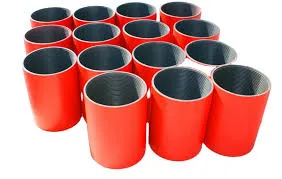- Afrikaans
- Albanian
- Amharic
- Arabic
- Armenian
- Azerbaijani
- Basque
- Belarusian
- Bengali
- Bosnian
- Bulgarian
- Catalan
- Cebuano
- Corsican
- Croatian
- Czech
- Danish
- Dutch
- English
- Esperanto
- Estonian
- Finnish
- French
- Frisian
- Galician
- Georgian
- German
- Greek
- Gujarati
- Haitian Creole
- hausa
- hawaiian
- Hebrew
- Hindi
- Miao
- Hungarian
- Icelandic
- igbo
- Indonesian
- irish
- Italian
- Japanese
- Javanese
- Kannada
- kazakh
- Khmer
- Rwandese
- Korean
- Kurdish
- Kyrgyz
- Lao
- Latin
- Latvian
- Lithuanian
- Luxembourgish
- Macedonian
- Malgashi
- Malay
- Malayalam
- Maltese
- Maori
- Marathi
- Mongolian
- Myanmar
- Nepali
- Norwegian
- Norwegian
- Occitan
- Pashto
- Persian
- Polish
- Portuguese
- Punjabi
- Romanian
- Russian
- Samoan
- Scottish Gaelic
- Serbian
- Sesotho
- Shona
- Sindhi
- Sinhala
- Slovak
- Slovenian
- Somali
- Spanish
- Sundanese
- Swahili
- Swedish
- Tagalog
- Tajik
- Tamil
- Tatar
- Telugu
- Thai
- Turkish
- Turkmen
- Ukrainian
- Urdu
- Uighur
- Uzbek
- Vietnamese
- Welsh
- Bantu
- Yiddish
- Yoruba
- Zulu
coupling tube fitting
Understanding Coupling Tube Fittings A Comprehensive Overview
Coupling tube fittings are essential components often used in various piping and tubing systems across multiple industries, including automotive, aerospace, pharmaceuticals, and manufacturing. These fittings serve as connectors between two tubes or pipes, allowing for a secure and leak-free connection while facilitating the flow of fluids, gases, or even solids through the system. In this article, we will delve into the types, applications, advantages, and installation methods of coupling tube fittings.
Types of Coupling Tube Fittings
Coupling tube fittings come in various designs, each tailored to specific applications and types of tubing materials. The most common types include
1. Compression Fittings These fittings compress a sleeve or ferrule onto the tubing when tightened, creating a secure seal that prevents leaks. Compression fittings are widely used due to their ease of installation and reliability.
2. Flared Fittings These fittings use a conically shaped end that flares out to create a tight seal with a corresponding fitting. Flared fittings are prevalent in high-pressure applications due to their strength and durability.
3. Barbed Fittings Barbed fittings have ridges that grip the tubing securely once it is pushed onto the fitting. They are commonly used in low-pressure applications, such as in garden hoses or aquarium systems.
4. Push-to-Connect Fittings These fittings allow for quick and easy connections without the need for additional tools. You simply push the tubing into the fitting, and it locks in place. This type is favored in applications where frequent disconnections are necessary.
Applications
Coupling tube fittings have a wide range of applications due to their versatility. Some common uses include
- Fluid Transport In chemical and petroleum industries, coupling fittings ensure the safe and efficient transport of liquids and gases. - Instrumentation Many scientific and industrial instruments require tubing connected via coupling fittings to monitor and control processes accurately.
- Hydraulic and Pneumatic Systems These fittings are critical in systems that rely on pressure to perform tasks, safely connecting various hoses and tubes.
coupling tube fitting

- Manufacturing and Assembly In production lines, coupling tube fittings facilitate the assembly of equipment, allowing for smooth operations.
Advantages of Coupling Tube Fittings
Coupling tube fittings offer numerous benefits, making them an ideal choice for many applications
1. Ease of Installation Many coupling fittings are designed for quick and simple installation, reducing downtime and labor costs.
2. Leak Resistance A well-installed coupling fitting ensures a tight seal, minimizing the chances of leaks, which can be critical in high-pressure fluid systems.
3. Versatility With various types available, coupling tube fittings can adapt to different tubing materials and sizes, fitting diverse application needs.
4. Durability Many coupling fittings are made from robust materials such as stainless steel, brass, or plastic, resulting in long service life even in challenging conditions.
Installation Considerations
Proper installation of coupling tube fittings is crucial for optimal performance. Key considerations include
- Compatibility Ensure that the fitting is compatible with the tubing material and size. - Cleanliness Clean the surfaces of both the fitting and tubing before connection to prevent contamination.
- Torque Specifications Follow manufacturer guidelines for torque settings, especially for compression and flared fittings, to achieve the best seal.
In conclusion, coupling tube fittings are integral components in many fluid transport systems. Understanding their types, applications, advantages, and installation methods can help users select the right fittings for their specific needs, ensuring safe and efficient operations. Whether in industrial settings or home projects, the right coupling tube fitting can significantly impact the reliability and longevity of a piping system.
-
Tubing Pup Joints: Essential Components for Oil and Gas OperationsNewsJul.10,2025
-
Pup Joints: Essential Components for Reliable Drilling OperationsNewsJul.10,2025
-
Pipe Couplings: Connecting Your World EfficientlyNewsJul.10,2025
-
Mastering Oilfield Operations with Quality Tubing and CasingNewsJul.10,2025
-
High-Quality Casing Couplings for Every NeedNewsJul.10,2025
-
Boost Your Drilling Efficiency with Premium Crossover Tools & Seating NipplesNewsJul.10,2025







